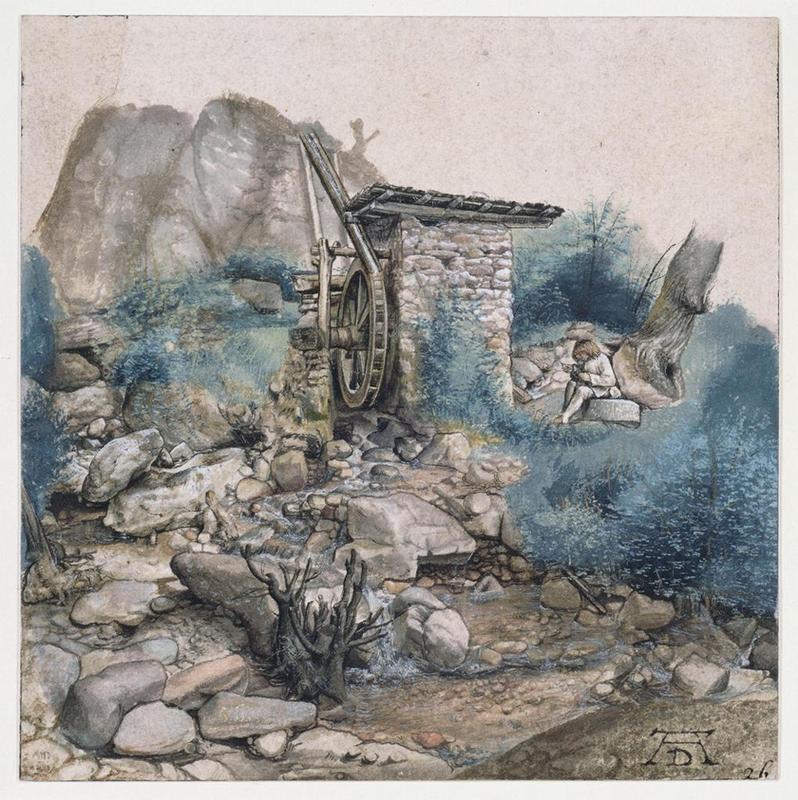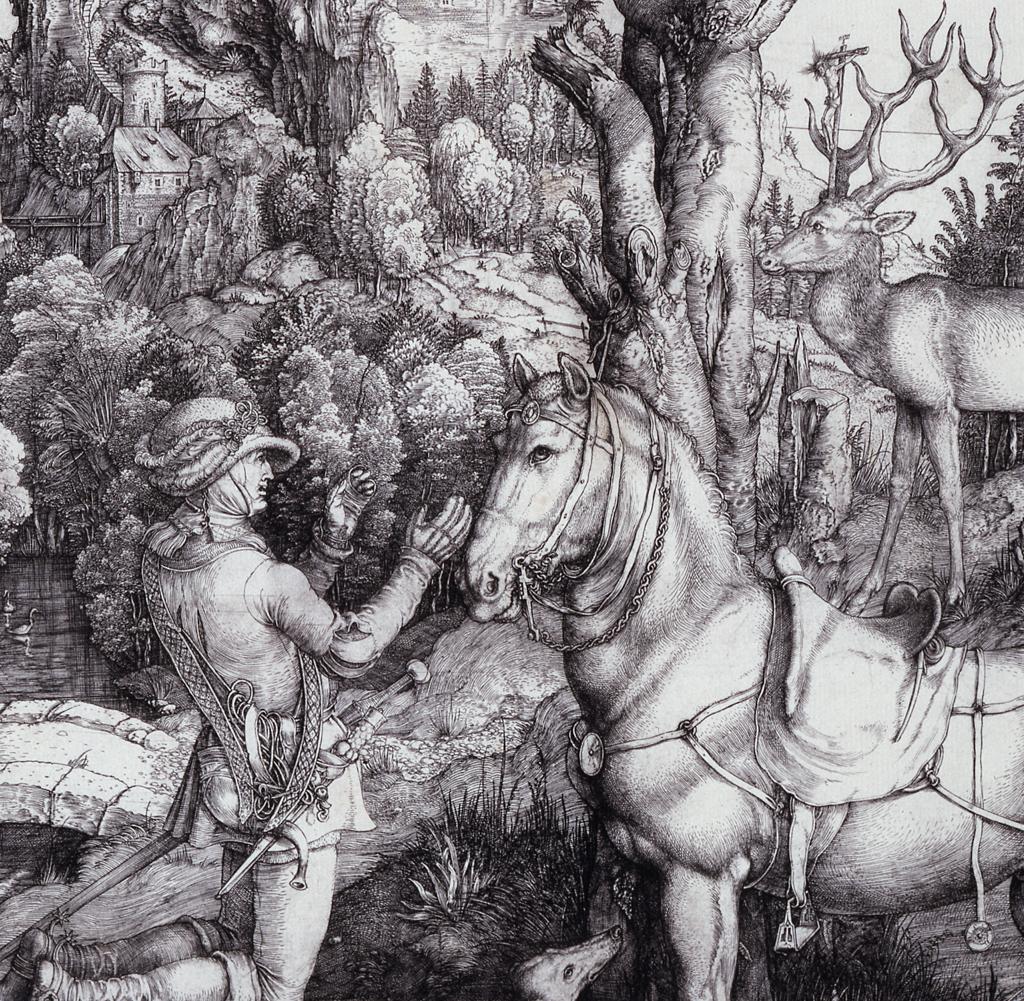Nature and the Outdoors

Albrecht Dürer, Water Mill in the Mountains, ca. 1495-1505. Watercolor, 13.3 x 13.2 cm. Berlin, Kupferstichkabinett, inv. no. KdZ 3369.
Many facets of Dürer’s artistic output characterize his creativity and virtuosity. His nature studies consolidated his reputation from the day he first began to execute such works. According to Dürer, the study of nature is a discipline and vital for the understanding of art. God’s inventiveness is communicated through nature’s infinite variety and therefore its appeal is eternal. Briefly put, in Dürer’s opinion, the representation of nature creates the highest form of art (note 1).
Dürer made a habit of observing subjects outdoors, rather than in his studio. At the turn of the sixteenth century, he was one of the very few painters considered to be a plein-air artist. The notion that Dürer made sketches outside in natural environments is primarily based on the subject matter of one of his early watercolors. Water Mill in the Mountains illustrates a figure with a sketchbook sitting on a millstone under an open sky. This image alludes to the idea that an artist can acquire firsthand knowledge of elements in nature by working outdoors. Studying nature closely allowed Dürer to eventually create an original watercolor such as The Large Piece of Turf. This work combines two genres of art (landscape and still life) into one picture.
The German artist developed a genuine appreciation for individual species because he depicted them directly from nature. Works of art that were true-to-life garnered close attention during the Renaissance, and it is not surprising to learn that Dürer’s compositions were amongst the most highly esteemed and passionately collected during that time period.
Notes:
note 1. For more on Dürer’s opinion on nature’s role in the arts, see “The Four Books of Human Proportion,” in William M. Conway ed., The Writings of Albrecht Dürer, (New York, 1958), 227-252.
